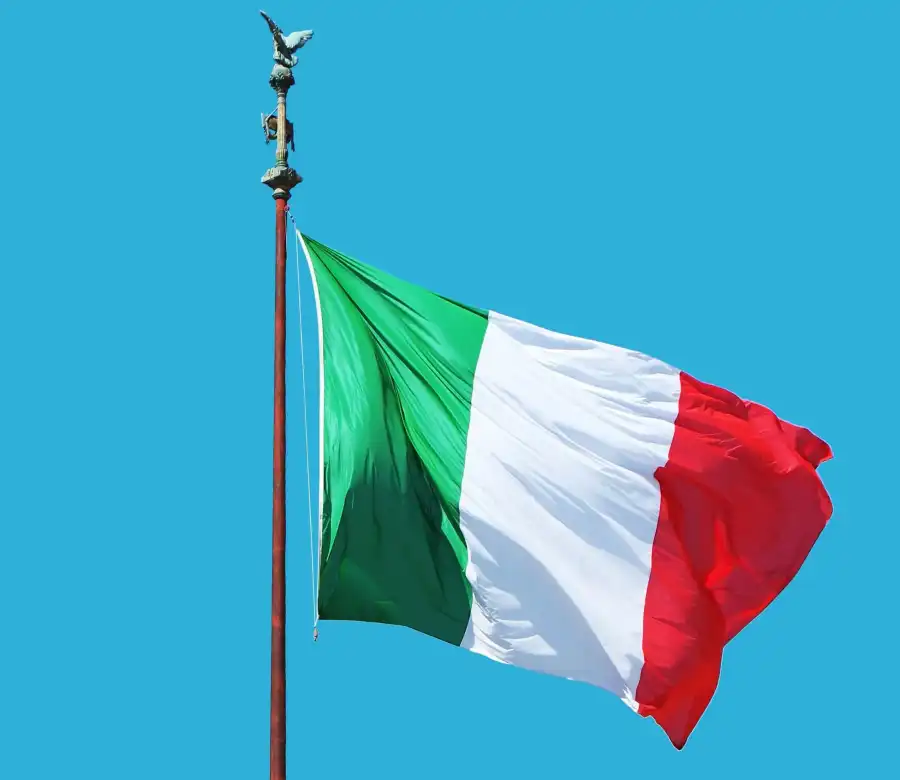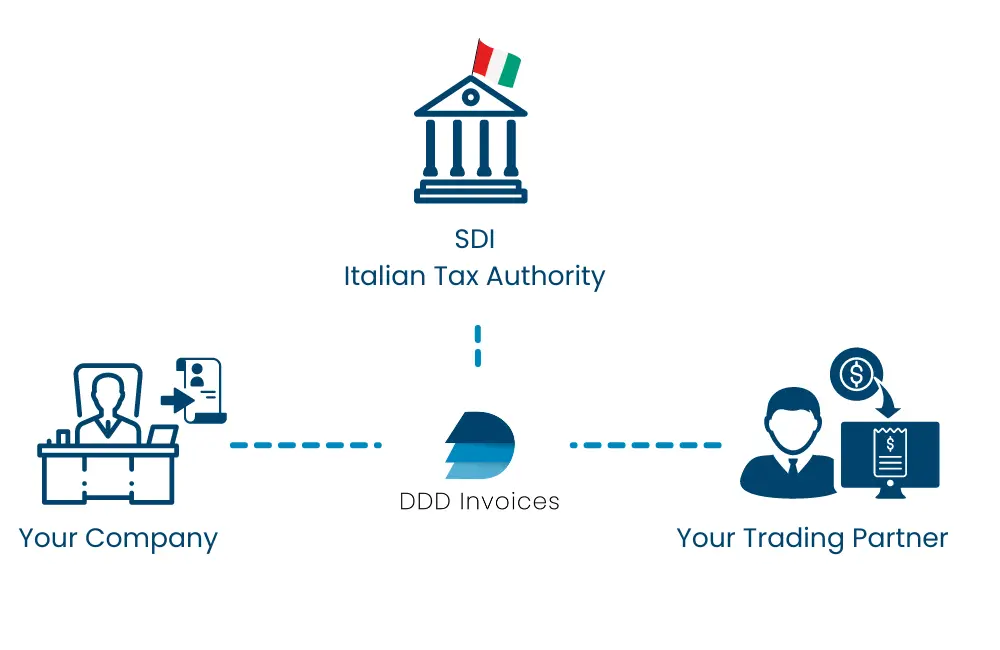
All about B2B e-invoicing in Italy
Last modified on 24 May 2023 in Countries
Standard
FatturaPa
Tax Portal
Sistema di Interscambio (SDI)
Tax Authority
Agenzia delle Entrate
CTC Model
Central Platform Exchange
B2G
2014
B2B
2019
Archiving
10 years
Pending DDD Invoices support
Value Added Tax (VAT) e-invoicing in Italy is a crucial aspect of the country's digitalization efforts in the realm of tax administration. As part of the government's drive to modernize invoicing processes, e-invoicing has been implemented to enhance efficiency, combat tax evasion, and simplify compliance for businesses.
Italy was the first country in the EU to implement the mass use of e-invoicing fueled by the goal to lower their VAT gap which is the biggest in the EU. E-invoicing has been mandatory for B2B since 2019 and B2G since 2014. The key requirement for VAT e-invoicing in Italy is compliance with the FatturaPA specifications via the Sistema di Interscambio (SDI).
Latest News
Itay has completed its transition to electronic invoicing for both B2B, B2G, and B2C with some exceptions. No further changes to Italian e-invoicing are expected at this time in regard to B2B and B2G e-invoice issuance, but there may be some changes to B2C transactions in the near future. The Esterometro directive initially implemented in 2019 was also made obsolete in 2022 with the SDI model replacing it.
Italian e-invoice legislation timeline
-
2014 - mandatory e-invoicing for B2G transactions
-
2016 - Single Schema released for B2G, B2B, and B2C electronic invoicing
-
1 January 2019 - mandatory for domestic B2B to offer e-invoices via SDI after the FatturaB2B mandate
-
1 January 2022 - B2B and B2C (with some exceptions) e-invoicing mandatory for those with an annual turnover greater than 65,000 EUR
-
1 July 2022 - introduction of pre-filled VAT returns to speed up foreign transaction reporting
- 3 additional taxpayer groups to issue e-invoices: taxpayers under the flat-rate tax regime, amateur sports associations and third-sector entities with revenue up to €65,000 and taxpayers from San Marino

Who is affected by e-invoicing in Italy?
Obligated issuers
-
B2B - for national and cross-border transactions
- if an invoice is delivered through the SDI, it cannot be rejected
-
B2G - public administrations have the right to reject an invoice delivered through the SDI
-
Flat-rate tax regime taxpayers
-
Amateur sports associations and third-sector entities with revenue up to €65,000
-
Taxable persons in Italy, both national and foreign entities
Exchange System/Sistema di Interscambio (SDI)
Functions
-
Invoice approval portal - ensures live verification of all taxable transactions before a client receives it
-
VAT compliance - although it is a strict system, it has helped to achieve greater transparency
-
Incorrect data format rejection - the system will reject files that are not in the correct structured data format, decreasing the number of possible errors

Specifications
Similarly to Serbia and Poland, the SDI is a central platform exchange. It plays a crucial role in facilitating the transmission and processing of invoices between suppliers and recipients, ensuring compliance and authenticity.
The SDI uses a FatturaPA format which so far Italian tax authorities have not required a qualified digital signature for. Regardless of the type of e-invoice, businesses have an obligation to use the SDI portal for their VAT registration.
Reporting deadlines
Italy tries to encourage as close to real-time electronic invoicing as possible. Thus, they have on average shorter reporting deadlines than the rest of the world.
-
Sales invoices - must be reported within 12 days of delivery
-
Purchase invoices - must be reported by the 15th of the month after delivery
Penalties
In order to encourage the use of the SDI, Italy has high fines from 90% to 180% of the VAT due. There is also an additional penalty of €2 per invoice with a maximum of €1,000 per quarter for non-declaration of invoices. There is some leeway in this decree due to the level of complexity of live reporting through the Exchange System as a foreign agent.
How to send e-invoices in Italy through the SDI
-
Register in FatturaPa - intended for those with a high degree of computerization, who have the resources and staff support to manage a system connected with SDI, and who need to send and receive a high volume of e-invoices
OR
Sign in through a Certified Electronic Mail (CEM) address or PEC in Italian -
Pick one of the 2 e-invoicing modes
-
Manual method - makes use of human intervention, but is not as efficient if the business requires a high volume of invoices
- Requires a PEC-certified email with input through a web form
-
Automated transmission - direct transmission between FatturaPA and a ERP system
- 3 automated transmission services - SDICoop Web Service, SDI FTP Service and SPCoop Web Service
-
-
Fill in the codice destinatario or recipient code which is based on the registered service provider of the client
OR
Fill in the PEC code - only included in the XML invoice if the codice destinatario is "0000000" -
The SDI checks the invoice and through the code, identifies who to send the invoice to
-
The customer receives the invoice
Conclusion
Being the first country in the EU to mandate e-invoices, Italy became a trendsetter that set forth a new wave of digitalization. Taxpayers established in Italy have to make sure of many different specifications in order to properly issue compliant invoices.
Moving forward, the new system of using the SDI portal, FatturaPa format and archiving invoices through an electronic system for 10 years will need to be utilized. In order to comply, many companies have navigated the bureaucracy by switching to third-party service providers such as DDD Invoices.
Get started with an e-invoicing solution
Despite the changes done to the VAT system, Italy remains to hold one of the highest VAT gaps in Europe with many businesses still struggling to navigate SDI e-invoicing. Foreign entities can especially have problems registering and using the SDI platform possibly exposing a business to fines.
Most users have turned to third-party web applications and integration solutions to avoid issues with the government-provided system. Integrations like DDD Invoices have significantly reduced the time and effort needed for e-invoicing, making it the preferred solution among businesses. Through this solution, you can automate your e-invoicing, satisfy your obligation of e-archiving for 10 years, and easily comply with Italy's e-invoicing standards.
FAQs about VAT e-invoicing requirements in Italy
Is e-invoicing mandatory in Italy?
How to issue e-invoices in Italy?
What is the codice destinatario?
Italy introduced the codice destanitario which plays an essential role in its e-invoicing model. It acts as a recipient's tax code which defines the address to which the invoice should be transmitted to through the SDI.
3 types of ways to deliver an e-invoice- Codice destinatario - most common
- Certified Electronic Mail or PEC
- Codice destinatario with "0000000"
What is the best e-invoicing program in Italy?
"Ready to save on development costs?"
Unlock globally compliant e-invoicing with a single API
"Ready to save on development costs?"
Unlock globally compliant e-invoicing with a single API